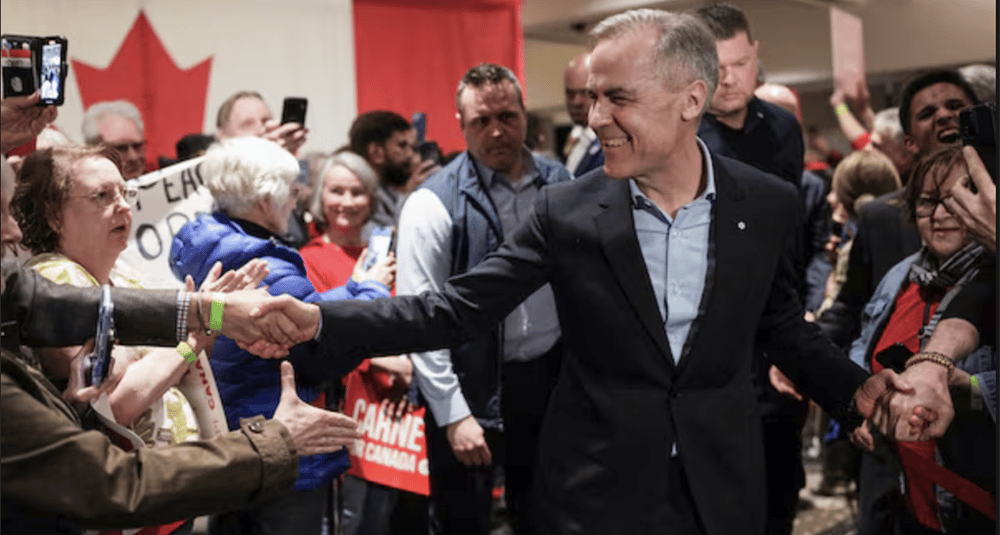Canada’s 2025 Election: A Nation Stands Up to Trump’s Trade War and Annexation Threats
4/27/20253 min read


Canada’s 2025 Election: A Nation Stands Up to Trump’s Trade War and Annexation Threats
Introduction: A Pivotal Moment for Canada
On April 28, 2025, Canadians head to the polls in a federal election unlike any in recent memory. What was shaping up to be a predictable Conservative landslide has been turned upside down by U.S. President Donald Trump’s aggressive trade war and provocative threats to annex Canada as the “51st state.” Prime Minister Mark Carney, a political newcomer who replaced Justin Trudeau in March, is riding a wave of Canadian nationalism to challenge Conservative leader Pierre Poilievre. This election isn’t just about domestic policy—it’s about who can best defend Canada’s sovereignty and economic future against an unpredictable southern neighbor. Here’s what’s at stake and why this vote matters.
Trump’s Tariffs and Taunts Reshape the Race
Just months ago, the Liberals were trailing the Conservatives by double digits, with Trudeau’s popularity sinking under the weight of inflation, a housing crisis, and immigration concerns. But Trump’s 25% tariffs on Canadian goods, coupled with his inflammatory rhetoric about absorbing Canada, have ignited a firestorm of defiance. Canadians are boycotting American products, canceling U.S. travel plans, and rallying around the “Elbows Up” slogan—a hockey-inspired call to stand tough. Polls now show the Liberals leading the Conservatives by as much as 43.6% to 36.1%, a stunning reversal fueled by a surge in national pride.
Mark Carney: The Crisis Manager Steps Up
Enter Mark Carney, the former governor of the Bank of Canada and Bank of England, who took the Liberal helm on March 9 with 86% of the party’s vote. Carney, untested in elected office, has leaned on his reputation as a global economic strategist to position himself as the steady hand Canada needs. His fiery rhetoric—“Canada never, ever will be part of America”—and promises of dollar-for-dollar retaliatory tariffs have struck a chord. Carney’s platform emphasizes energy independence, housing investments, and diversifying trade to reduce reliance on the U.S. His international connections, from Davos to the G20, are seen as key to navigating this crisis.
Pierre Poilievre: A Populist Caught Off Guard
Conservative leader Pierre Poilievre, once poised for victory, is struggling to adapt. His “Canada First” slogan aims to tap into the same nationalist fervor, but his past ties to Trump allies like Elon Musk and his populist style draw uncomfortable comparisons to MAGA. Poilievre’s campaign, built on attacking Trudeau’s carbon tax and promising fiscal restraint, has been derailed by Carney’s decision to scrap the consumer carbon tax and Trump’s overshadowing presence. Analysts say Poilievre’s message that “Canada is broken” clashes with the public’s newfound defiance, leaving him on the defensive.
A Surge in Canadian Nationalism
Trump’s taunts have done more than shift polls—they’ve galvanized Canadians. From NHL fans booing the U.S. anthem to “Never 51” jerseys popping up nationwide, the country is embracing its identity with unprecedented fervor. Social media is abuzz with calls to buy Canadian and shun American brands. A Liberal ad featuring Mike Myers declaring “there will always be a Canada” has racked up over 7 million views, capturing the national mood. This election has become a referendum on sovereignty, with voters asking: Who can stand up to Trump without escalating the trade war into economic ruin?
What’s at Stake?
The next prime minister will inherit a high-stakes balancing act. Canada’s economy, heavily tied to the U.S., faces recession risks if tariffs persist. Carney’s push to diversify trade and invest in housing and clean energy could strengthen resilience but requires time and global allies. Poilievre’s focus on pipelines and tax cuts appeals to resource-rich provinces like Alberta but risks alienating urban voters. Beyond economics, the election will shape Canada’s global image—will it remain a proud, independent nation or be seen as buckling under U.S. pressure? The outcome could also influence liberal movements worldwide, offering a playbook to counter populist surges.
The Road to April 28
With just days left, Carney is campaigning on strength and unity, warning that Trump “wants to break us so America can own us.” Poilievre, meanwhile, insists he’ll demand respect from Trump while accusing Carney of being “Trudeau 2.0.” The 36-day campaign, the shortest allowed by law, has been dominated by foreign policy—a rarity in Canadian elections. Smaller parties like the NDP and Bloc Québécois are struggling to break through, with polls suggesting the Liberals could secure a majority, a feat unimaginable months ago.
Conclusion: A Defining Moment
Canada’s 2025 election is more than a choice between Carney and Poilievre—it’s a test of national resolve. Trump’s trade war and annexation threats have awakened a sleeping giant, forcing Canadians to confront their identity and future. Will they rally behind Carney’s technocratic defiance or Poilievre’s combative vision? The answer will reverberate far beyond Canada’s borders, shaping North American relations and the global fight against populism.
Thought Questions:
How should Canada balance economic dependence on the U.S. with defending its sovereignty?
Can Mark Carney’s lack of political experience be an asset or a liability in facing Trump?
What role should Canadian nationalism play in shaping policy beyond the election?
Photo Credit:theglobeandmail.com
hello@boncopia.com
+13286036419
© 2025. All rights reserved.